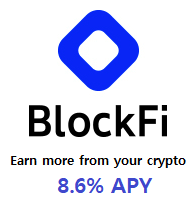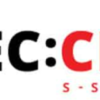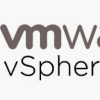Cogent will send the customer a complete BGP table without aggregating the internal Cogent routes. This is useful for customers who are multi-homed within the Cogent Network.
Local Preference
All customer routes announced to Cogent will have a local pref of 130. The customer can control the local preference for their announcements by using a BGP community string that is passed to Cogent in the BGP session. The following table lists the BGP community strings and the corresponding local preference that will be set when they are used.
| BGP Community String | Local Pref | Effect |
| 174:10 | 10 |
Set customer route local preference to 10
(below everything-least preferred)
|
| 174:70 | 70 |
Set customer route local preference to 70
(below peers)
|
| 174:120 | 120 | Set customer route local preference to 120 (below customer default) |
| 174:125 | 125 | Set customer route local preference to 125 (below customer default) |
| 174:135 | 135 | Set customer route local preference to 135 (above customer default) |
| 174:140 | 140 |
Set customer route local preference to 140 |
AS Padding
connections. Customers with an assigned private AS number from Cogent may not pad their AS path. Cogent will ignore any padding of private AS numbers from customers.
No-Export
| BGP Community String | Effect |
| 174:970 | Do not send route to NA (North America) – not accepted in NA |
| 174:971 | Do not send route to NA peers. |
| 174:975 | Set local preference to 10 in NA. |
| 174:980 | Do not send route to EU (Europe) – not accepted in EU |
| 174:981 | Do not send route to EU peers. |
| 174:985 | Set local preference to 10 in EU. |
| 174:990 | Do not send route to BGP customers, or peers. |
| 174:991 | Do not send route to peers. |
Peer Controls
| BGP Community String | Effect |
| 174:3000 | Do not announce. |
| 174:3001 | Prepend 174 1 time. |
| 174:3002 | Prepend 174 2 times. |
| 174:3003 | Prepend 174 3 times |
Detailed Non-Transit Peer
Other BGP Communities
| BGP Community String | Description |
| 174:21000 | Route is learned from NA (North America) non-customer. |
| 174:21001 | Route is NA internal or customer route. |
| 174:21100 | Route is learned from EU (Europe) non-customer. |
| 174:21101 | Route is a EU internal or customer route. |
Applying BGP Community string with sample configuration
1. Get the latest BGP community string from your ISP/upstream provider or check www.ShowipBGP.com web site.
2. Pick the best BGP community string for your traffic shaping plan (mainly incoming traffic).
Most of ISPs are providing community string with local preference and AS prepending
option. Cannot tell which one is better than the other. It will depend on your global traffic shaping plan.
3. Follow the below commands ( Cisco only )
The below Sample configuration will tag the 10.0.0.0/24 route with [ISP AS]:120 or [ISP AS]:3 and will not tag any other routes.
router#config t
router(config)#ip bgp-community new-format
router(config)#access-list 10 permit 10.0.0.0 0.0.0.255
router(config)#access-list 10 deny any
router(config)#route-map [to-ISP] permit 10
router(config-route-map)#match ip address 10
router(config-route-map)#set community [ISP AS]:120 <—- using Local Preference
or
router(config-route-map)#set community [ISP AS]:3 <——- using AS prepending
router(config-route-map)#route-map [to-ISP] permit 20
router(config-route-map)#exit
router(config)#router bgp [xxxx] <——————————- xxxx = customer’s ASN
router(config-router)#neighbor x.x.x.x send-community
router(config-router)#neighbor x.x.x.x route-map [to-ISP] out
router(config-router)#exit
router(config)#exit
router#copy running-config startup-config
4. And then, go to www.routeserver.org and pick one of route server on the map to see your announcement. If you are using AS prepending option, you will see your AS prepends on route servers. Sometime you might not see your route with particular ISP path.
In most of case it might not be any routing problem, just the route path was dropped at somewhere by BGP best path selection scheme. Try Oregon route server, if you can see your route. The Oregon route server is providing many possible and available paths between BGP speakers and neighbors.
If you don’t see your route on there? check other route servers and also check your
BGP configuration. You might need to contact your upstream provider to check what they are learning BGP route from you.



 The www.ipBalance.com runs by a volunteer group with IT professionals and experts at least over 25 years of experience developing and troubleshooting IT in general. ipBalance.com is a free online resource that offers IT tutorials, tools, product reviews, and other resources to help you and your need.
The www.ipBalance.com runs by a volunteer group with IT professionals and experts at least over 25 years of experience developing and troubleshooting IT in general. ipBalance.com is a free online resource that offers IT tutorials, tools, product reviews, and other resources to help you and your need.

![[Splunk] – Basic search fields and commands logo_splunk.png](https://ipbalance.com/wp-content/uploads/2009/06/logo_splunk-100x80.png)
